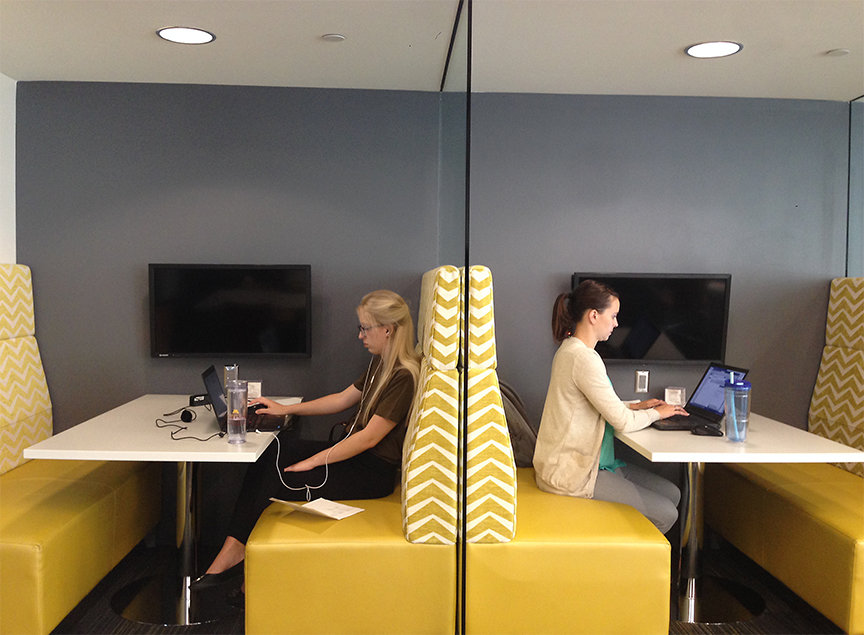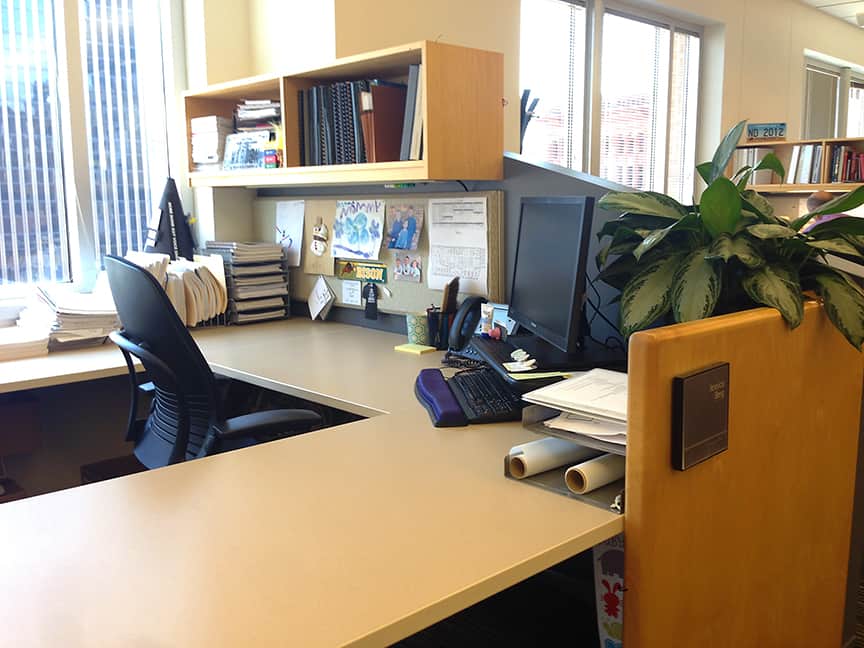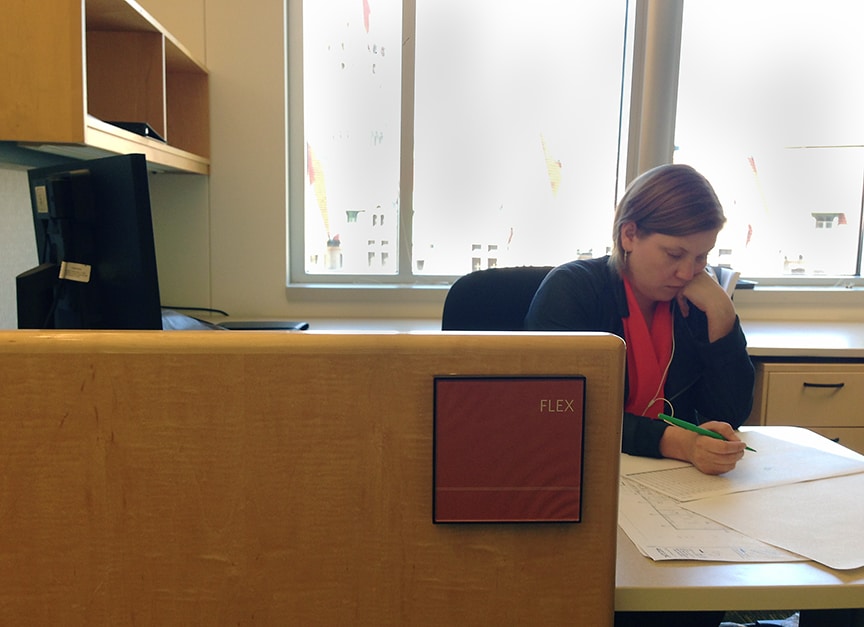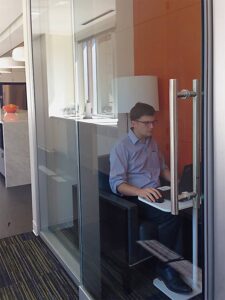This article is part two of a three-part series about enhancing the way we work at BWBR. The series covers why we are changing; how we are changing; and the results so far.
Since mid-2015, our office has been a living laboratory, looking at how we, and people in general, can work better by being more mobile and flexible with our work spaces.
If necessity is the mother of invention, our necessity was growth. In the past, the solution to growth would be more space: people equaled desks, desks equaled space, more people equaled more space. This time, we chose to look at the solution by asking a different question. Instead of where we could put more people, we asked how. It not only helped us see how we could grow right, it allowed us to see better how employees work.
Free Address
At any given moment during the workday, 30- to 35-percent of desks in a workplace (including ours) are empty. By looking at desks as something beyond assigned real estate, this “empty” space all of the sudden opens as “shared” space, and the employee assigned a home previously now is free to work where and how they need.
This is the birth of free address — where a person no longer has an assigned, dedicated desk or office. They are untethered, not just from a specific location, but from all the stuff, too. In theory, if everyone in a typical office was free address, you could fit nearly three times the people with the same number of desks. Obviously, the math doesn’t quite add up, as not everyone is using or not using desks at the right time.
Free address was where we started, and it not only allowed us to fit more people in the same space, it provided an opportunity to meet goals beyond increasing utilization. It allowed us to enhance how we work, break down the perceived silos to drive cross-team collaboration, and begin building a team of teams to achieve a fully networked organization. For this transformation to succeed, we needed to change, investing in the tools that allow us to do our work: furniture, technology, shared resources, and the space, itself.
We also carefully considered how we managed the change. The amount of change required us to plan for it, talk about it, listen more actively, and adapt as we go.
Changing Minds with FLEX
BWBR’s mobile initiative, FLEX, started with just a small group of people who were willing to give free address a try. They traded in their desk for a locker where they can keep a few incidental things and hang their coat. For them it meant the freedom to choose a space anywhere in the office they could best do their work – a small room or tucked away corner if they need quiet and focus; or, if they need to collaborate with a particular person or team, they can find an area to work nearby. For the firm, it meant freeing up desks and other locations around the office for them to use.
In fact, FLEX is a firm-wide attitude, more than a free address initiative. We quickly learned that having a few people free address impacts the entire office. We all need to be flexible in how we connect with each other, how we manage ourselves and others, how we find one another, how we support work happening in alternative locations, etc.
Changing Space
The FLEX program, itself, is a bit of an experiment. As we learn about the impacts, we continue to revise and test again. About a quarter of our office was transformed to be a mostly furniture-based, flexible, open environment. As a need arises, most everything can be removed and replaced with a new piece of furniture.
When you create an open and vibrant environment, you have to balance that with quiet spaces. It is estimated that 50-percent of all workers are introverts who find loud and open work environments uncomfortable. Additionally, there are times when we all need some quiet and focus. We created several focus rooms to give people a quiet space to work, make phone calls, or to have offline conversations.
Additional alternative work spaces are found in the work café: booths, lounge, café seating. These options are enhanced through technology and allow the work café to be a popular place for impromptu collaboration as well as individual work. Like a coffee shop, our work café is where people gather…to take a break, to eat, or work the better part of the day in one of the digitally connect booths. The work café is stocked with snacks, including some healthy choices, so people don’t need to leave the office if they need a quick bite. Our staff use this space in a variety of ways throughout the day.
In addition to locations around the office, we created a variety of working spaces to support FLEX. Work counters, casual seating, collaboration clusters, and project bars are located throughout the office. We intentionally designed these spaces to give everyone in the office more choices in where and how they work.
Finally, for all these new types of work spaces, we needed to set some ground rules on how they should be used. These norms are pretty open, erring on the side of being less restrictive so that we can see how spaces are actually used. The norms include suggested use and time limits for touchdown spaces and focus rooms. The norms include some common sense things for shared spaces such as “campsite rules” – leave it better than you found it.
Technology is Key
When we discuss creating a mobile, collaborative environment with our clients, we emphasize an investment in technology as well as the physical space. Strong wireless network, laptops, and cell phones enable mobility. Fortunately, we had a head start on those enablers with our switch to 100-percent laptops about a decade ago and most people already have a cell phone. Most free address staff forward their work extension to their cell phone so they are always reachable. And having a laptop, means they can connect anywhere, anytime, and work.
Evolving as We Go
The transformation is a process. It is never complete. We are learning and evolving as we go. In the next blog post, we’ll discuss how we’ve measured our results, what the results are, how were evolving based on feedback, and if we’re succeeding in enhancing the way we work.











